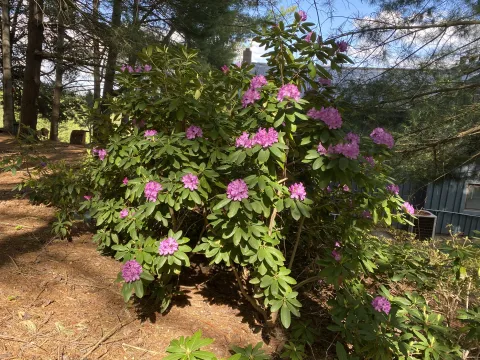Fall Tree Planting

Fall is a good time to plant trees but do your homework and pick the right tree for the right spot
By Steve Roark
Volunteer, Cumberland Gap National Park
While spring is the traditional season to plant trees and shrubs, fall may be better. The soil is still fairly warm on into December, and it gives the tree a chance to rest and get well settled into the soil before the spring growth spurt. The following are a few guidelines on choosing and planting trees.
Where to get a tree: Your best source is a good nursery. Try to get a one-year guarantee, because all the moving around the tree has had to endure is very stressful, and survival is not a sure thing. Digging trees from the wild can be done, but these trees often have widely dispersed roots that are difficult to dig. Moving trees from shady woods to a sunny yard may be too much for them to adapt to. If you dig up trees, be sure and obtain permission from the landowner, and stick with small specimens with fewer roots.
Smaller is better: Trees go through a period of shock after being transplanted and may just sit there and sulk before beginning to grow in earnest. This no-grow period may last a year for small trees, and up to five years for larger ones. Given the price difference between the big trees and small, the choice is easy. You just gotta be patient.
Check the roots: With container grown trees, avoid big trees in small pots and ones that you can rock in the pot. Watch out for root balls that are all big, ropey roots the size of a pencil or larger. Big roots are a sign that the tree is pot-bound and probably won’t survive. You want a root mass with lots of tiny, fibrous feeder roots.
Check the profile: Look for a straight central trunk with wide limb angles. Avoid trees with crossing branches and ones with narrow crotches.
Watch for trouble signs: Avoid any tree with wilted or dead leaves, obvious insect damage, leaf spots, skinned or cracked bark, or little pin holes that may be evidence of borer insects. Your tree should look healthy and sturdy, with glossy, pliable leaves.
What kind of tree: This is strictly up to the buyer but check on the following: Match the tree to the sight, putting trees that like it dry in dry places. Don’t plant trees that get big in tight spots like near your house or under utility lines. If yard maintenance is an issue, avoid trees that drop fruit or a lot of twigs. It pays to study up on your tree before you buy it.
- Log in to post comments